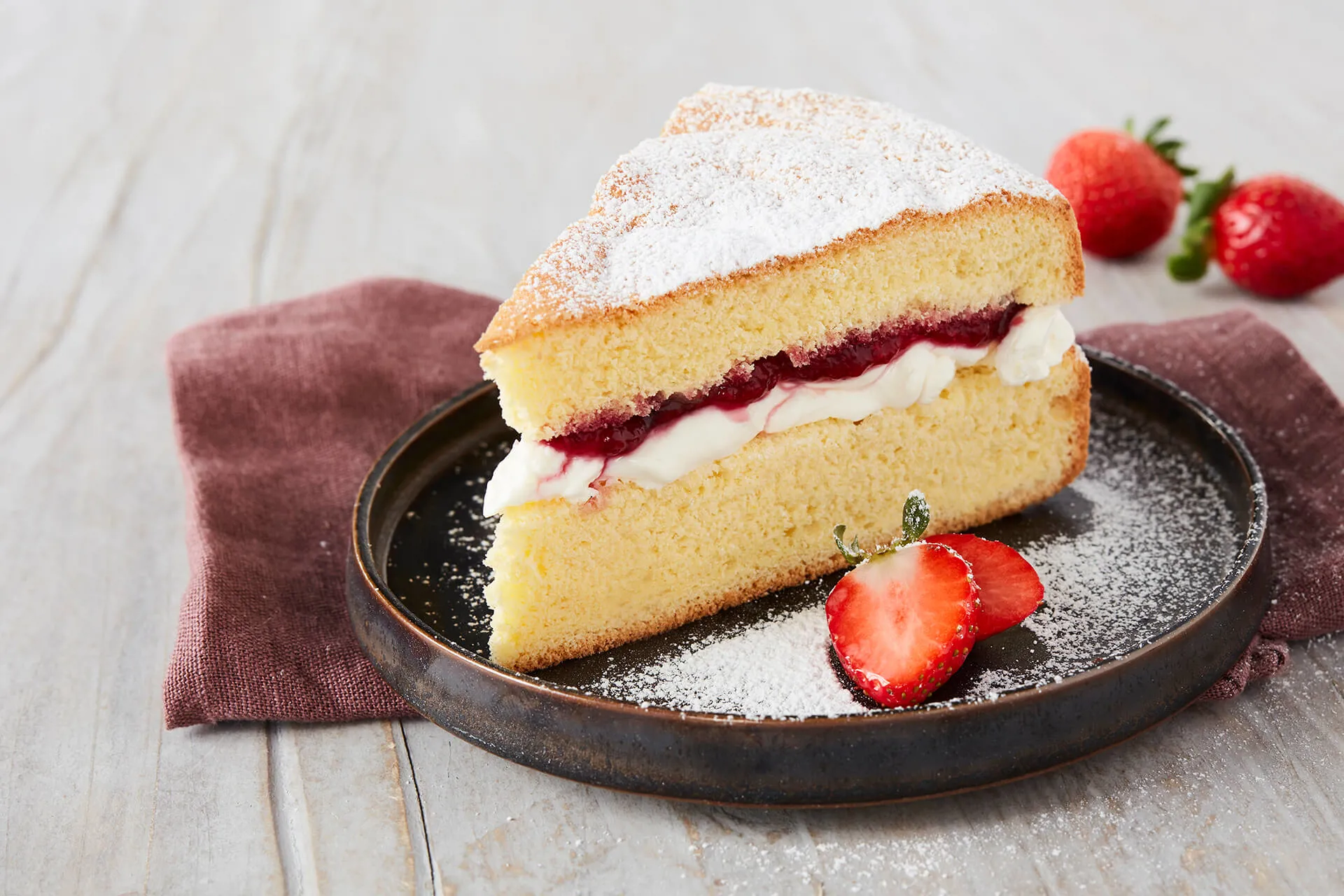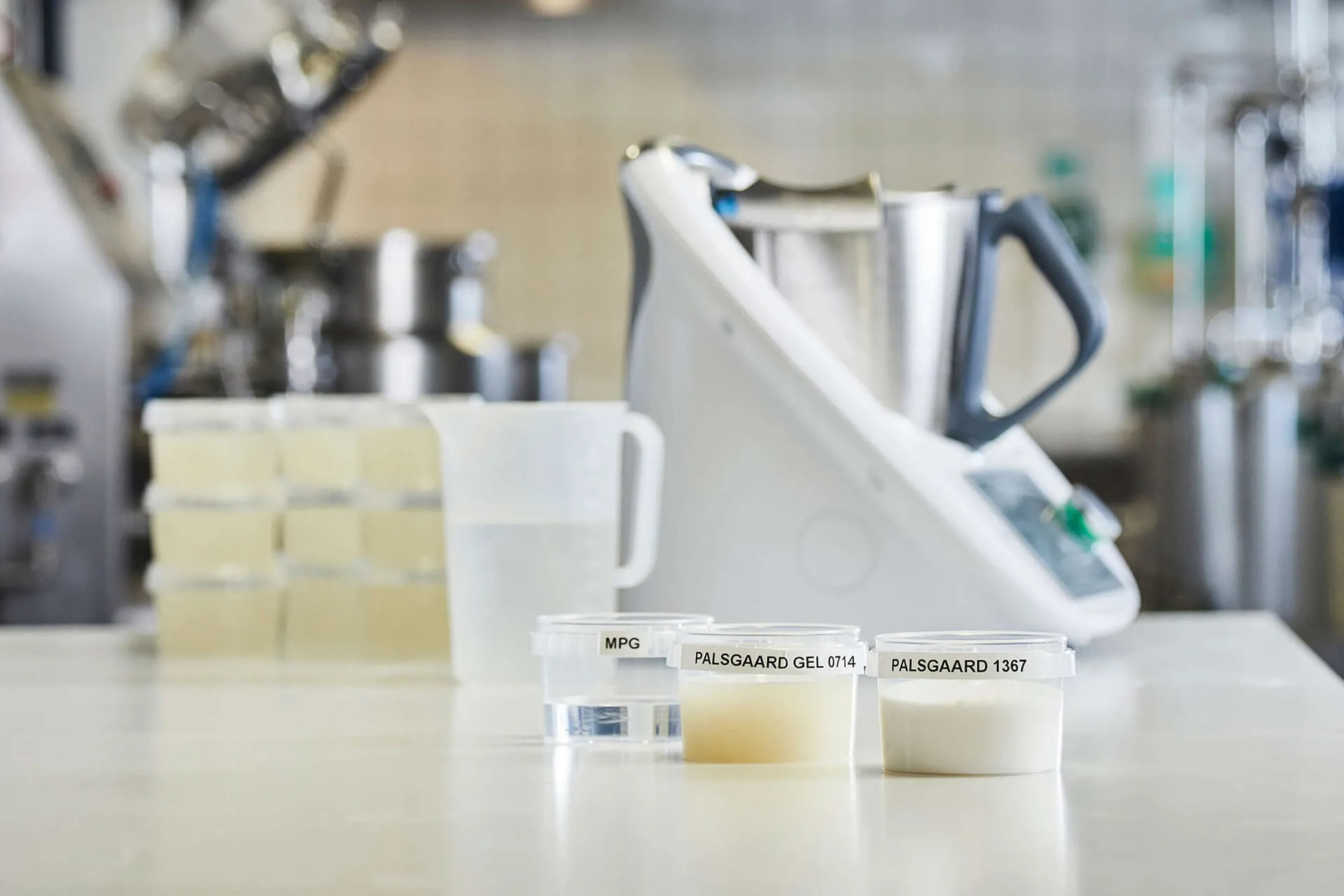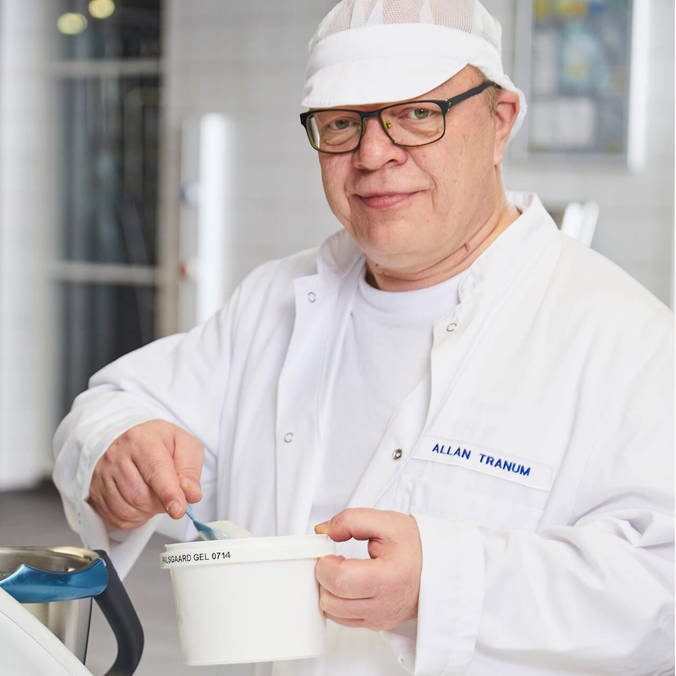
EMULSIFIERS FOR
TECHNICAL ARTICLE
Meeting consumer demand for delectable cakes with superior softness, crumb structure, and volume is a piece of cake with Palsgaard’s new generation of cake gel emulsifiers – trans-fat-free, safe to handle, and deliciously simple to use. Allan Tranum, Senior Application Specialist in lipids and cake gels, explains its benefits.
There’s a certain alchemy in baking – that magic of capturing air to transform a dense batter into a light, moist, well-risen cake with a homogenous distribution of optimally sized, stabilized air bubbles. For Allan Tranum, rising to the challenge of creating a new cake gel emulsifier solution that could provide all of these benefits, as well as being simple to use and with fewer ingredients was a dream assignment. His interest in cakes goes back to the first 13 years of his working life, which he spent as a baker. It was his hunger to learn more about the complex science behind baking that led him to retrain as a food technologist, which brought him to Palsgaard 23 years ago.
“I started out specializing in lipids with margarine, then began working with gels in 2013 when they were moved into the lipids team from bakery,” he explains. “Before then I hadn’t really known much about cake gel, other than it being something that was used to improve the whippability of the batter. A good analogy is how shaving gel foams up when you work it. Better whipping results in a higher, moister, softer cake with a better crumb structure. So, in a nutshell, my job with this project was to help bakers get more air into their cakes.”

A good cake gel contains alpha (α) crystalline emulsifiers which have been modified to remain stable throughout every step of the production process.
“Alpha crystals are the active whipping components, but without a helping hand from food technologists they only remain stable under a very narrow range of conditions,” Allan explains. “After about three to five days, they will tend to transform into beta [ß] and beta prime [ß’] crystals and lose their aeration capability. Our job is to stabilize them so they remain active for around 12 months. After all, if you invest a big 10kg tub of cake gel, you might only use 2-5% of it every time you bake – there’s a lot of potential cake in 10kg of cake gel! So a long shelf life is very important.”
“The main thing companies struggle with is finding the right balance between high whippability and good ingredient stability. If you increase the emulsifier content to improve whipping, you lose stability, but if the alpha crystals aren’t stabilized, you can’t whip properly and hence you end up with poor baking performance. It can be difficult to create a stable recipe with reproducible results.”
Historically, the main issues with cake gels have been the number of ingredients needed to make and stabilize them (clue #1: it’s a large number) and the nature of some of those ingredients (clue #2: they’re not very nice).
The typical cake gel contains seven to nine ingredients, including:
When working on the new cake gel formulation, rather than reinvent the wheel, Allan and his team turned to Palsgaard’s extensive range of emulsifiers already being used by cake gel manufacturers. After many months of experimentation, they hit paydirt – the dream team of Palsgaard® 1367 plus Palsgaard® Gel 0714.
Cake gel emulsifier Palsgaard® 1367 is a bespoke combination of Palsgaard® PGE and Palsgaard® DMG emulsifiers. Palsgaard® Gel 0714 is potassium stearate in paste form, containing just glycerol [E422] and potassium salts of fatty acids [E470a].
When these are mixed in the ratio of 5% Palsgaard® Gel 0714 and 28% Palsgaard® 1367, together with 14% mono propylene glycol, and 53% water, the result is the perfect combination of good stability and good whippability required for an excellent aerated batter, boasting the gold standard cake gel stability of 12 months – with just four ingredients and not a caustic one in sight.
“The new cake gel is easier to handle because we have removed hazardous chemicals, reducing the risk of work-related accidents. Procurement is simplified with fewer raw materials and suppliers, and production is more efficient as the batter whips faster with fewer added ingredients. We are working strategically to reduce energy consumption and CO₂ emissions across our operations. In addition, we offer our full range of palm oil-based emulsifiers as RSPO Segregated (SG) certified options, enabling customers to choose products that meet certified sustainability requirements.”

"The more ingredients you have in a cake gel recipe, the greater the scope for quality control issues, supply chain problems, and ingredient imbalances in production. The more things you have to handle during the process, the bigger chance that mistakes will happen, Those corrosive ingredients also cause handling issues, so we wanted to eliminate them. And of course, on the label, it all sounds quite “chemical”, which consumers tend not to like."
Allan Tranum, Senior Application Specialist, Palsgaard A/S
There’s also another big tick in the dream team’s favour – better-for-you ingredients. In 2003, following the publication of the seminal Harvard Medical School study linking trans-fats to significantly increased risks of cardiovascular disease, Denmark – where Palsgaard is headquartered and has its origins – became the first country in the world to strictly limit the amount of industrially produced trans-fats in food. Reducing or eliminating trans-fats where possible is something Palsgaard strives to achieve, so ensuring the new cake gel recipe was free of trans-fats was high on Allan’s agenda.
“Palsgaard’s expertise is in creating trans-fat-free solutions – it’s something we’ve been working on for many years,” he stresses. “It took around 18 months to create our trans-fat-free cake gel. It wasn’t an easy thing to do – we had to run a lot of trials to get the perfect results with the right ingredient blend. From our market research, we don’t think anyone else is making a trans-fat-free cake gel, so I’m very proud that ours is one of a kind.”
Having worked in partnership with the bakery industry and cake gel manufacturers for decades, Palsgaard has built up a huge bank of knowledge on the interaction between ingredients and process, which means any problems that manufacturers face during processing can be dealt with quickly and efficiently.
“We have many clever people here at Palsgaard who know a huge amount about emulsifiers and the interaction of the multiple ingredients during processing, so we are ready to help. If I don’t know the answer, I’ll have a colleague who will – there's a lot of knowledge shared here. We can also test out cake gel in full-scale factory production – we can produce a batch in one hour.
“As well as our long-term customers for whom we’ve been producing cake gel ingredients for many years, we believe our new cake gel duo ‘dream team’ will be attractive to a new generation of bakers.”